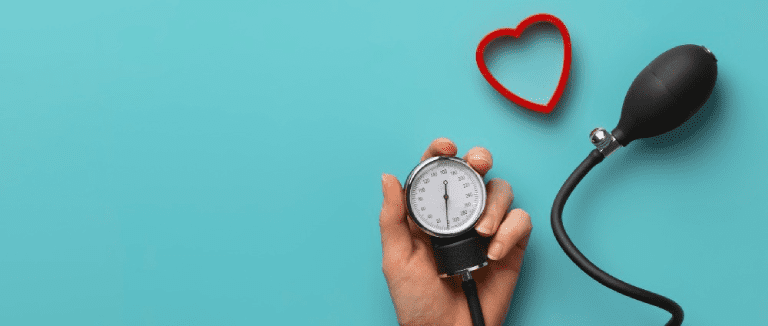Blood Pressure: Basics, Measurement, and Health Risks
Blood pressure is a key indicator of overall health, yet many people do not fully understand what it is, how it is measured, or the potential health risks associated with abnormal levels. In this article, we will explore the basics of blood pressure, how it is measured, and why it is important to be aware of the potential dangers of both high and low blood pressure.

What is Blood Pressure?
Blood pressure is the force that your blood puts on the walls of your arteries as your heart pumps. Arteries move oxygen-rich blood to your organs and tissues, and the right pressure helps deliver the oxygen and nutrients they need. Blood pressure is measured in millimeters of mercury (mm Hg) and shown as two numbers. The first, called systolic pressure, is the higher number and shows the pressure when your heart contracts and sends blood into the arteries. The second, called diastolic pressure, is the lower number and shows the pressure when your heart relaxes between beats.
A common example is 120/80 mm Hg, which people usually say as 120 over 80. Here, 120 is the systolic pressure and 80 is the diastolic pressure. These two numbers give important information about how hard your heart is working and how well your blood vessels are functioning. Keeping your blood pressure at healthy levels helps protect your arteries, heart, brain, kidneys, and eyes from long-term damage.
How is Blood Pressure Measured?
Blood pressure is checked using a device called a sphygmomanometer. This can be either manual, with a cuff, a bulb to inflate it, and a stethoscope, or digital, with an automatic monitor that inflates and shows your numbers. To measure, the cuff goes around your upper arm and is inflated to briefly stop blood flow. As the cuff deflates, a healthcare provider listens for blood flow sounds with a stethoscope if using a manual device. The first tapping sound marks the systolic pressure, and when the sound disappears, that’s the diastolic pressure.
Digital monitors measure these values electronically and show the results on a screen. Your readings can change based on things like cuff size, how you sit, what you’ve been doing, or even if you talk during the test. To get the most accurate reading, follow these tips:
- Sit still and relax for five minutes before you take your measurement.
- Make sure your back is supported and your feet are flat on the floor.
- Rest your arm on a table at heart level.
- Don’t have caffeine, smoke, or exercise for at least 30 minutes before you check your blood pressure.
- Make sure the cuff fits your arm properly.
Checking your blood pressure at home regularly can help you notice changes early. It’s also helpful to keep a record of your readings, including the date, time, and anything that might affect your numbers, like stress, when you took medication, or if you exercised.
Blood Pressure vs. Heart Rate
Although blood pressure and heart rate (pulse) are both important for assessing cardiovascular health, they measure different aspects. Blood pressure indicates the force of blood pushing against the artery walls, while heart rate measures how many times the heart beats each minute. While both provide valuable information about your cardiovascular system, they serve different roles in evaluating your overall well-being and heart function.
What Do Blood Pressure Numbers Mean ?

Blood pressure numbers indicate the force of blood in your arteries during two main phases of each heartbeat. The systolic pressure (the top number) measures the pressure when the heart contracts and pumps blood into the arteries. The diastolic pressure (the bottom number) measures the pressure when the heart relaxes between beats.
Normal Blood Pressure Numbers
A normal blood pressure reading is typically around 120/80 mm Hg. However, the ideal range can vary based on age, sex, and individual health factors. For most adults, maintaining a blood pressure below 120/80 mm Hg is considered healthy and important for overall well-being.
High Blood Pressure (Hypertension)

Hypertension, occurs when the force of blood against your artery walls remains consistently elevated. Hypertension is classified in stages: Stage 1 involves readings between 130/80 and 139/89 mm Hg, while Stage 2 refers to readings of 140/90 mm Hg or higher.
What Causes High Blood Pressure ?
The causes of high blood pressure are often complex and involve multiple factors. These can include genetics, unhealthy lifestyle habits (such as poor diet, lack of exercise, and smoking), obesity, stress, and certain underlying health conditions. Identifying symptoms early is important for timely treatment and effective management.
Problems Caused by High Blood Pressure
If high blood pressure is left untreated, it can lead to serious health complications such as heart disease, stroke, kidney damage, vision problems, and injury to blood vessels throughout the body. Proper management of hypertension is essential to reduce these risks and protect your long-term health.
Low Blood Pressure
Low blood pressure, or hypotension, occurs when the force of blood against the artery walls is lower than normal. As a result, blood may not flow efficiently to vital organs and tissues. This can cause symptoms such as dizziness, fainting, fatigue, and blurred vision.
What Causes Low Blood Pressure ?
Low blood pressure can be caused by a range of factors, including dehydration, certain medications, heart conditions, endocrine disorders, and other health problems. A specific form, called orthostatic hypotension, happens when blood pressure drops suddenly upon standing up from a sitting or lying position.
Problems Caused by Low Blood Pressure
Low blood pressure can cause symptoms like dizziness, fainting, fatigue, and blurred vision. In more severe cases, it may result in insufficient oxygen supply to the brain and other vital organs, which can lead to organ damage or even organ failure.
Prevention and Treatment of Blood Pressure Problems
Preventing and treating blood pressure problems often involve lifestyle modifications such as maintaining a healthy diet, regular exercise, limiting alcohol consumption, quitting smoking, managing stress, and taking prescribed medications if necessary. Regular monitoring of blood pressure is essential for early detection and management of any issues. Individuals with hypertension or hypotension should consult with a healthcare provider to develop a personalized treatment plan tailored to their specific needs.
* Liv Hospital Editorial Board has contributed to the publication of this content .
* Contents of this page is for informational purposes only. Please consult your doctor for diagnosis and treatment. The content of this page does not include information on medicinal health care at Liv Hospital .
For more information about our academic and training initiatives, visit Liv Hospital Academy
Frequently Asked Questions
What is blood pressure?
Blood pressure is the force of circulating blood against the walls of your arteries as your heart pumps. It is recorded as two numbers systolic (upper) over diastolic (lower) and measured in millimeters of mercury (mm Hg).
What is considered normal blood pressure?
A normal blood pressure reading for most adults is around 120/80 mm Hg. Readings consistently above or below this range may indicate high or low blood pressure.
What causes high blood pressure?
High blood pressure can result from factors such as genetics, poor diet, lack of exercise, obesity, stress, smoking, or certain chronic health conditions like diabetes or kidney disease.
What are the symptoms of high blood pressure?
High blood pressure often has no noticeable symptoms, which is why it’s called a “silent killer.” In advanced cases, it can cause headaches, shortness of breath, or nosebleeds.
What causes low blood pressure?
Low blood pressure may be caused by dehydration, certain medications, heart conditions, hormonal imbalances, or sudden posture changes such as standing up quickly.
How can I prevent blood pressure problems?
You can prevent blood pressure issues by maintaining a healthy diet, exercising regularly, limiting salt and alcohol, quitting smoking, managing stress, and monitoring your blood pressure routinely.
When should I see a doctor about my blood pressure?
You should see a doctor if your readings are consistently above 130/80 mm Hg or below 90/60 mm Hg, or if you experience dizziness, fainting, chest pain, or severe headaches. Regular check-ups are essential for long-term heart health.



